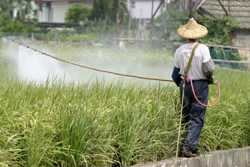Monitoring herbicide levels in soil over time
Atrazine is a potent herbicide that has been banned in the European Union, but is still used heavily in other countries. In the framework of the ACCESS project, European experts collaborated with colleagues from South America to study the full life cycle impacts of atrazine and other chlorinated herbicides on the environment. A key to the ACCESS research was the development of an easy, accurate and inexpensive analytical method to determine herbicide concentrations in soil samples. The test is appropriate for chlorinated herbicides such as atrazine and 2,4-dichlorophenoxyacetic acid (2,4-D) as well as their metabolites. Furthermore, it is compatible with samples rich in organic matter such as humus. The work was led by scientists with the University of Buenos Aires in Argentina. Other members of the ACCESS research consortium helped extend the range of detectable herbicides to include, among others, simazine. The methodology is targeted to countries that rely heavily on agricultural exports but that may not yet have the necessary technical or financial resources to perform such analyses on a regular basis. It also has use following the application of bioremediation measures to eliminate herbicides from a particular location, for instance in preparation for organic farming.







